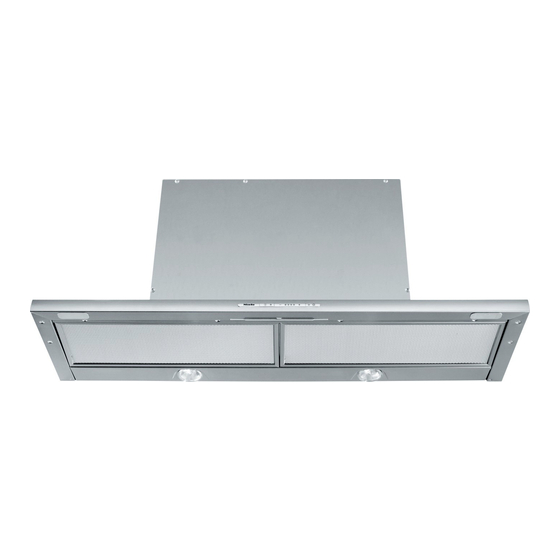Connection for air extraction
Important: To avoid the danger of
toxic fumes, please observe the
Warning and Safety instructions.
This is especially crucial when using
the rangehood at the same time as
another heating appliance which
relies on air from the same room.
The rangehood should be installed
according to local and national
building regulations. Seek approval
from the building inspector where
necessary.
– Only use smooth pipes or flexible
hoses made from non-flammable
materials for the extraction ducting.
To achieve the greatest possible air
extraction with the lowest noise level,
please note the following:
– To ensure efficient air extraction, the
diameter of the exhaust ducting
should not be less than 150 mm.
– If flat ducting is being used, the
cross-sectional area must not be
smaller than the cross-sectional area
of the exhaust connection.
If exhaust ducting with a diameter of
less than 150 mm, or if flat ducting is
used, the noise level of the
rangehood will increase and
extraction will be less efficient.
– All ducting, pipework and fittings
must be of non-flammable materials.
– The exhaust ducting should be as
short and straight as possible.
– Only use wide radius bends.
32
– The exhaust ducting should not be
kinked or compressed.
– Ensure that all connections are
strong and airtight.
– Where ducting is horizontal, it must
be laid to slope away at at least 1 cm
per metre. This is to ensure that
condensate cannot drain back into
the rangehood.
– If the exhaust air is to be ducted into
the open air, the installation of a
telescopic wall vent or roof vent
(available as an optional accessory)
is recommended.
– If the exhaust air is to be ducted into
a vent flue, the ducting must be
directed in the flow direction of the
flue.
Important:
If the exhaust ducting is to run through
rooms, ceiling space etc. where there
may be great variations in temperature
between the different areas, the
problem of condensation will need to
be addressed. The exhaust ducting will
need to be suitably insulated.

